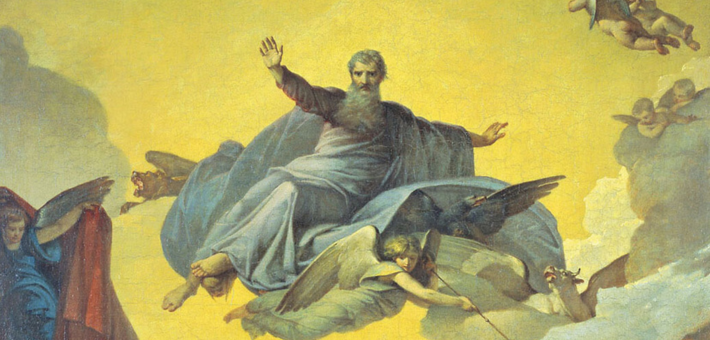Commentary on Exodus 12:1-14
I grew up in the church. I was one of those kids that participated in the local church’s youth-related activities, such as choir, Girl Scouts, and Sunday School. If there was a reason for kids to be at church, my parents loaded my sisters and me into the car’s backseat and ensured we were there! In Sunday School, I was exposed to a god who creates in seven days, trusting patriarchs like Abram, tricky characters like Jacob, faithful characters like Hannah, dynamic leaders like David, and brave women like Ruth and Esther. One of the stories I remember from childhood is about Moses, Pharaoh, and the plagues. I remember being worried about the baby floating down the river, repulsed by the idea of ugly frogs taking over the city, and invigorated by God parting the waters of the Red Sea so the people could leave Egypt. As a kid, I was so awed by the miracles of the plagues and the parting I did not consider the marvel of the Passover. And I do not think I am alone. I suspect most people—kids and adults alike—who read the book of Exodus focus on the scourges and the separating and do not consider the sacrament. A closer look at the Exodus 12:1-14 text illuminates the relevance of this ancient ordinance for modern congregations.
In the first part of the book of Exodus, the pharaoh refuses to let the Israelites leave Egypt, and God responds with a series of miracles that attest to the formidable power of the god of the Israelites. In quick succession, the Lord puts blood in the water, releases frogs, gnats, and flies upon Egypt, strikes the livestock with a deadly disease, infects the people with boils, rains down thunder and hail, overruns Egypt with locusts, dispatches darkness to the land, and announces the pending death of the firstborn in the land (Exodus 7-11). As the severity of the plagues escalates, and the sense of intrigue heightens, readers of the biblical text stand on virtual tiptoe looking over into the 12th chapter of the book to see how the great god of the Israelites will execute the next plague only to find the Lord giving Moses and Aaron instructions regarding the institution of a community ritual. Amid the dramatics associated with a hesitant Israelite leader repeatedly confronting a stubborn Egyptian pharaoh, an obedient sidekick marveling at frogs appearing when he stretches his staff over the waterways, and other out-of-this-world phenomena that stump the esteemed magicians of the Egyptian court, readers are met with detailed instructions for a ritual. Lodged between the announcement of the death of the firstborn of Egypt (Exodus 11:1-10) and deliverance from Egypt (Exodus 12:33-51), readers find the details of a communal sacrament. While the placement of our focus text may seem anticlimactic to invested readers of the sacred text, the canonical ordering of the Passover during demonstrations of the Divine’s power memorializes its importance.
Exodus 12 includes the institution of the Passover festival, which commemorates how the Lord spared the Israelites and did not destroy them when the land of Egypt suffered the tenth and final plague. Linguistically, the Hebrew word for Passover, pesach, means to “leave or spare by passing over.” The word comes from a verbal root meaning “to spare” or “to pass over.”¹ The Hebrew word points to the physical “passing over” when the angel of the Lord destroyed the Egyptians. The meaning of pesach is essential, but the mechanics of the first Passover are also significant.
While still in Egypt, the Lord instructed Moses and Aaron to inform the Israelites that each household was to sacrifice and hurriedly eat an unblemished lamb (or sheep or goat if they did not have access to a lamb) on a specified night (Exodus 12:1-8). While many English versions of the Bible translate the Hebrew word seh as “lamb,” this word represents a much broader group of animals. Because a seh is an animal of a flock, the Passover makes room for those who could not afford a lamb to participate in the ritual with a less premium animal like a sheep or a goat. Furthermore, if a household was too small to consume the entire animal, it would join its neighbor to participate in the ordinance. The mechanics of Passover make provision for all in the community.
“… then the whole assembled congregation of Israel shall slaughter it at twilight.” Exodus 12:6
There is something powerful about engaging in rituals with others. Individual acts of worship seem more earnest, and their effects are more remarkable when done in concert with others. In my faith tradition, we recite the General Confession when we celebrate the Last Supper every first Sunday of every month. I am always awed at the splendor of people across the globe, pausing to acknowledge their unique relationship with the Divine reverently. Men, women, and children representing various positions in the society gathered with their loins girded, their sandals on their feet, and their staffs in their hands, eating hurriedly (Exodus 12:11). How awesome must it have been when the Israelites gathered as a community to participate in the first Passover? The communal aspect of the Passover acknowledges the fact that the individual is, indeed, part of a larger group: that everyone belongs. The mechanics of Passover are communal.
The unleavened bread and bitter Passover herbs represent the Israelites’ pain. Once the households prepared the animal, members were to eat it quickly with unleavened bread and bitter herbs (Exodus 12:8). The unleavened bread (matzah) is an essential element of the Passover because it reminds us how the Israelites had to leave Egypt in such haste that the dough for their bread did not have time to rise.² The bitter herbs serve as another reminder of the harsh enslavement the Israelites endured in Egypt. The mechanics of Passover make room for our pain.
As a preface to the miraculous Exodus from Egypt, the mechanics of Passover make provision for all, are communal, and make room for pain. The mechanics of Passover also serve as a reminder of the promises of God. According to the writer(s) of Exodus 12:12-14, the Israelites were also instructed to put the slain animal’s blood on their doorposts. The Lord promises to pass over those blood-stained doors when the tenth plague falls upon the land of Egypt. “The blood shall be a sign for you on the houses where you live: when I see the blood, I will pass over you, and no plague shall destroy you when I strike the land of Egypt” (Exodus 12:13). The mechanics of Passover serve as a reminder of the promises of God.
The Passover, as recorded in Exodus 12, not only interrupts the demonstration of the power of God but also amplifies the importance of making provision for everyone, belonging to a community, remembering our pain, and celebrating the promises of God. I do not think modern readers of the Bible will ever not be awed by the stories of the plagues and the parting of the Red Sea. But those Hollywood-worthy exploits should not overshadow the sacrament detailed in the book of Exodus. Modern readers of the Exodus story are encouraged to consider the importance of the Passover ordinance as well.
Notes:
- Eugene E. Carpenter and Philip W. Comfort, ed., Holman Treasury of Key Bible Words, (Nashville: Broadman & Holman Publishers, 2000), page 134.
- Ken Royal and Lauren Royal. The New American Haggadah: A Simple Passover Seder for the Whole Family. (San Clemente, CA: Novelty Books, 2012), 21.


September 10, 2023